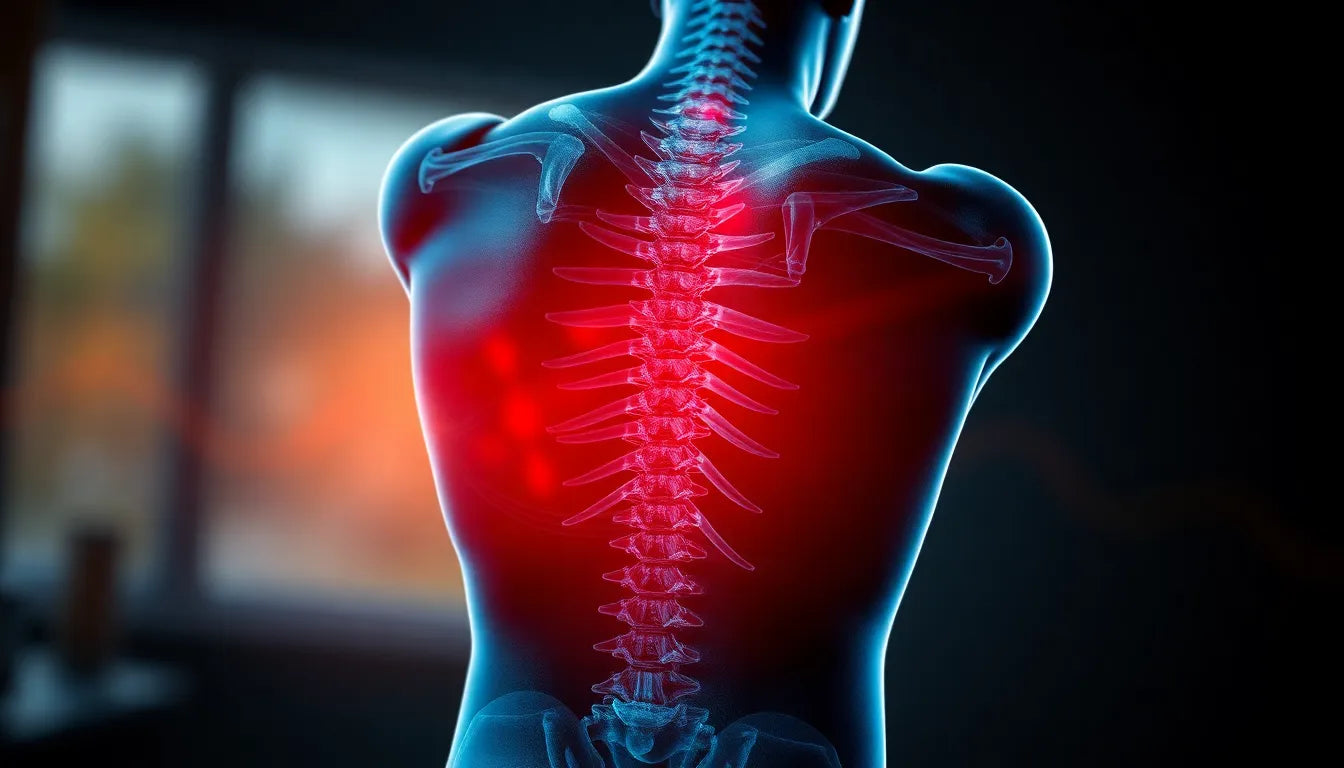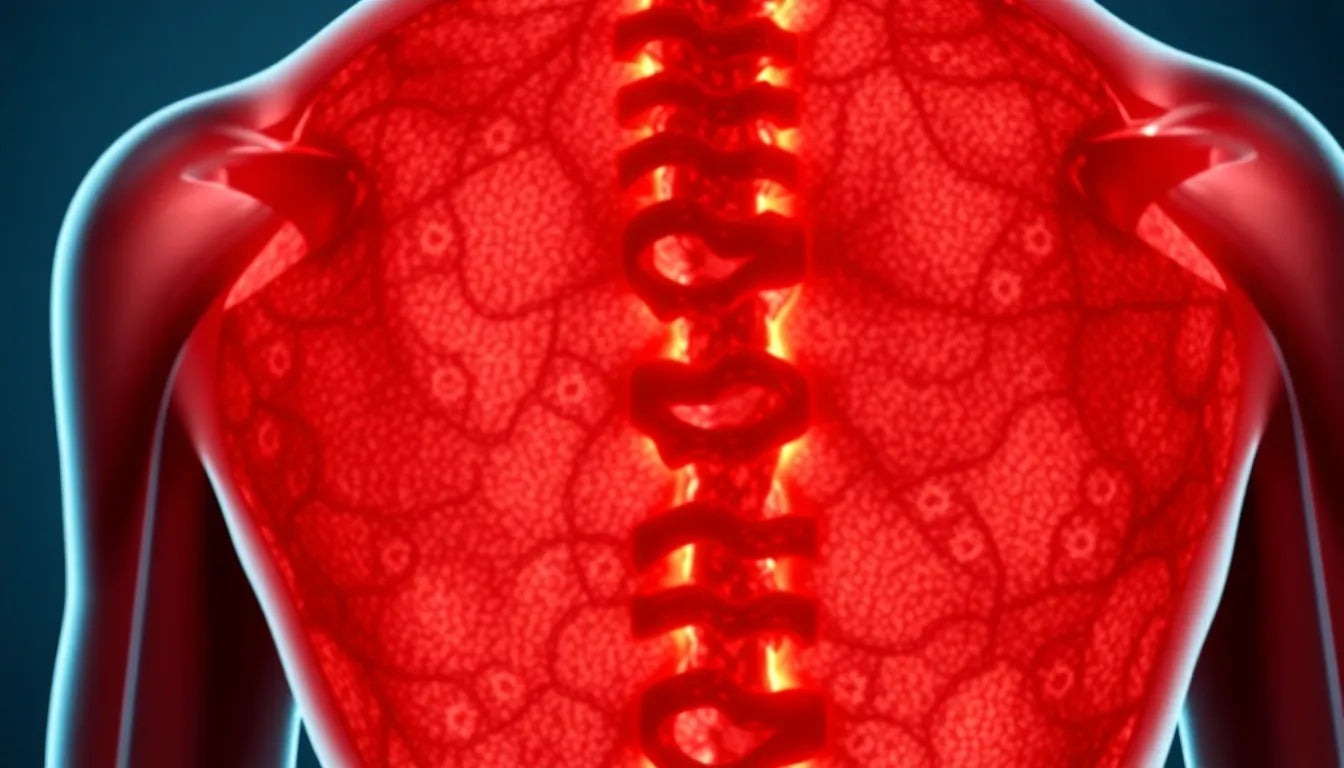Understanding the subtle signs of a herniated disc in the lower back is crucial for maintaining spinal health and preventing more severe complications. A herniated disc, often referred to as a slipped or ruptured disc, occurs when the soft inner gel of a spinal disc pushes through a tear in its tougher outer layer. This condition is particularly common in the lumbar region, which is the lower part of the spine. The lumbar spine's primary role is to support much of the body's weight and facilitate a wide range of movements, making it susceptible to wear and tear over time.
Why early detection is essential
Recognizing the signs of a herniated disc early can significantly impact the effectiveness of treatment and the prevention of further damage. Many people may overlook or misinterpret the initial symptoms, which can lead to prolonged discomfort and more significant health issues. The sooner these "silent signals" are identified, the better the chances are for a successful recovery. Early intervention can help avoid complications such as chronic pain, nerve damage, or even permanent disability in severe cases.
Have you noticed these symptoms?
Have you ever experienced unexplained back pain or a tingling sensation in your legs? These could be early indicators of a herniated disc in the lower back. While some symptoms might seem minor or unrelated, they can be critical clues pointing to this condition. It's essential to pay attention to your body's signals and seek medical advice if you notice persistent discomfort or unusual sensations, especially if they interfere with your daily activities.
In the following sections, we'll delve deeper into the common signs and symptoms associated with a herniated disc in the lumbar region, as well as the activities and movements that can exacerbate these symptoms. Understanding these aspects will equip you with the knowledge to spot the subtle signals your body might be sending, prompting timely medical consultation and intervention.
common signs and symptoms of a herniated disc in the lower back
Understanding the specific signs and symptoms of a herniated disc in the lower back is crucial for early detection and management. One of the primary symptoms is localized lower back pain. This pain can vary significantly, from a dull, persistent ache to sharp, stabbing sensations that can hinder daily activities. Muscle spasms often accompany this pain, further limiting mobility and causing discomfort.
Another hallmark symptom is sciatica, which occurs when the herniated disc compresses the sciatic nerve. This leads to sharp, shooting pain that radiates from the lower back through the buttock and down one leg. The intensity of sciatic pain can vary, but it often worsens with prolonged sitting or standing, making it a significant concern for those with sedentary jobs or lifestyles.
Numbness or tingling sensations in the leg, foot, or toes are also common, resulting from nerve root irritation. These sensory changes can be unsettling and may affect balance and coordination. In some cases, individuals might experience muscle weakness in the leg or foot, which can manifest as difficulty lifting the foot, commonly referred to as foot drop. This weakness can significantly impact mobility and the ability to perform everyday tasks.
Reflex changes are another symptom to be aware of. When nerve roots are compressed, there may be a noticeable reduction in knee or ankle reflexes. This can affect balance and coordination, increasing the risk of falls or other injuries.
factors that exacerbate symptoms
The symptoms of a herniated disc can be aggravated by certain movements and pressures. Activities such as standing, walking, coughing, sneezing, or sitting for extended periods can intensify the pain and discomfort. This is because these actions increase the pressure on the lumbar region, exacerbating the condition. Understanding these triggers is essential for managing symptoms and avoiding activities that could worsen the condition.
While many symptoms are manageable with proper care, some signs indicate a more serious issue requiring immediate medical attention. These include loss of bladder or bowel control and numbness around the groin or rectum, symptoms of cauda equina syndrome. This condition is a medical emergency and requires prompt intervention to prevent permanent damage.
recognizing the silent signals
Being aware of these symptoms and their triggers is vital for anyone experiencing lower back pain. Recognizing the silent signals of a herniated disc early can lead to more effective treatment and prevent further complications. If you notice any of these symptoms, especially if they persist or worsen, it is crucial to seek medical advice. Early diagnosis and intervention can make a significant difference in managing the condition and maintaining a good quality of life.
In the next section, we will explore the diagnostic procedures used to confirm a herniated disc and discuss the variability of symptoms based on the specific disc and nerve roots involved. Understanding these aspects will provide a comprehensive view of how to approach and manage this common spinal condition.
Diagnostic insights for herniated discs
Diagnosing a herniated disc in the lower back involves a combination of clinical examinations and imaging tests. Initially, a healthcare provider may perform a neurological exam to assess muscle strength, reflexes, and sensation. These tests help determine if nerve compression is affecting motor function or sensory perception in the lower extremities.
Magnetic Resonance Imaging (MRI) is often the preferred imaging technique for confirming a herniated disc diagnosis. An MRI provides detailed images of the soft tissues, including the spinal discs and nerves, allowing doctors to pinpoint the exact location and severity of the herniation. In some cases, a CT scan or X-ray may also be used to rule out other conditions.
Understanding symptom variability
Symptoms of a herniated disc can vary widely depending on the specific disc and nerve roots involved. For instance, a herniation at the L4-L5 level might cause pain and numbness in the thigh, while an L5-S1 herniation could affect the calf and foot. This variability highlights the importance of a personalized approach to diagnosis and treatment.
Muscle spasms and intermittent pain patterns are common, with symptoms often fluctuating based on activity levels and body positioning. Recognizing these patterns can aid in managing symptoms and avoiding activities that exacerbate discomfort.
Conclusion: recognizing and addressing the signs
Understanding the signs of a herniated disc in the lower back is crucial for timely diagnosis and effective treatment. Ignoring these symptoms can lead to chronic pain and more severe complications, underscoring the importance of seeking medical consultation at the earliest signs of trouble.
If you suspect a herniated disc, consult with a healthcare professional to explore diagnostic options and develop a treatment plan tailored to your needs. Early intervention can significantly improve outcomes and help maintain a high quality of life.
Frequently Asked Questions
What are the most common symptoms of a herniated disc in the lower back?
The most common symptoms include localized lower back pain, sciatica, numbness or tingling in the leg or foot, muscle weakness, and reduced reflexes. These symptoms arise from nerve compression caused by the herniated disc.
How is a herniated disc diagnosed?
A herniated disc is typically diagnosed through a combination of clinical exams and imaging tests such as MRI, which provides detailed images of the spinal discs and surrounding nerves.
Can a herniated disc heal on its own?
In some cases, a herniated disc can heal over time with rest and conservative treatments like physical therapy and anti-inflammatory medications. However, it's crucial to seek medical evaluation to ensure appropriate management and prevent complications.
When should I seek emergency care for a herniated disc?
Emergency care is necessary if you experience symptoms such as loss of bladder or bowel control, or severe numbness around the groin. These could indicate cauda equina syndrome, a serious condition requiring immediate medical attention.
```html


















